One of the advantages of gardening in the Houston climate is of course the perseverance of many plants through the mild winters. So far this cold season, we had one moderate freeze (down to 26F or so) in November 2018, and a few lighter frosts following that. The freeze did in the most tender plants (exit basil, plumeria, and portlandia), but left most others either unscathed or just burnt at the most exposed edges. As a result, we still have lots going on in the garden as we enter 2019. The rest of this page is a (non-exhaustive) photo log of what's still flowering.
Other daisies that are still sticking with it are the low-growing gerberas and gazanias, which were tender in our old garden in Pennsylvania but come through the winter just fine here; and the last flowers are still hanging on to the climbing aster, although its mass of flowers has mostly faded since its peak a month ago.
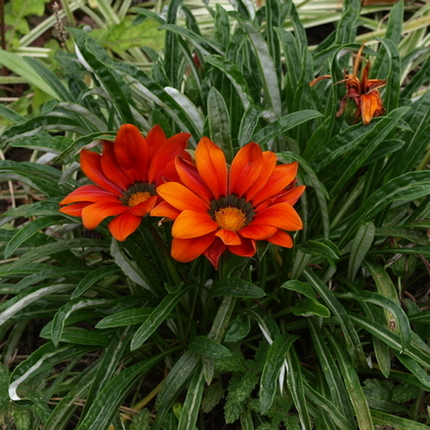
Gazania 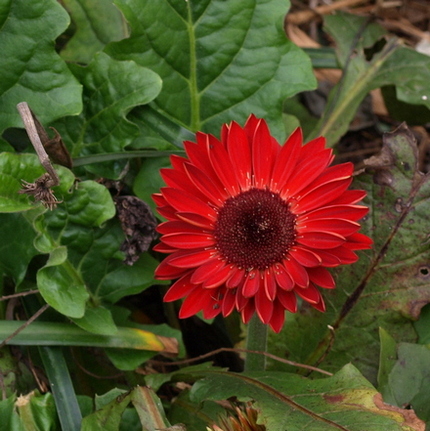
Gerbera - Transvaal daisy
Several salvias are continuing their all-season bloom into January as well. The flowers of S. coccinea are finally starting to peter out, but S. microphylla 'Hot Lips' and S. involucrata are still going strong. 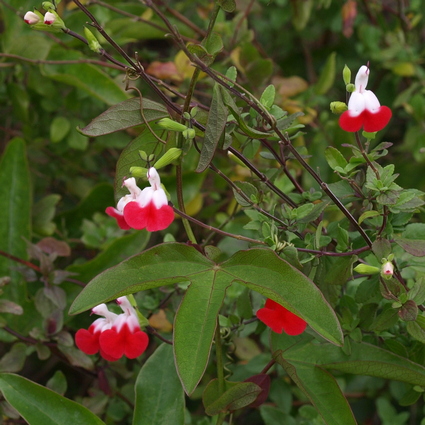
Salvia microphylla 'Hot Lips' 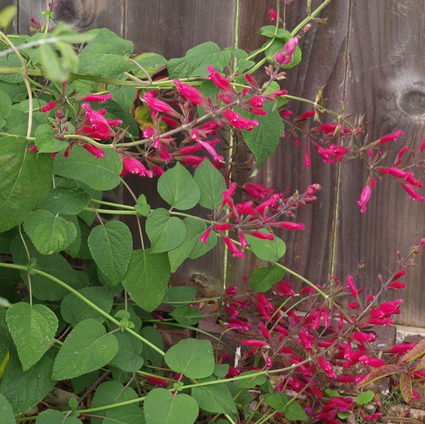
Salvia involucrata
Two neighbors in the back fence border: Thryallis (Galphimia glauca) has bloomed from late winter onward, but is no longer covered in yellow as it was through most of the season. On the other hand, our shrimp plant took its time to start producing flowers this year, but appears to be at its peak now that winter has arrived. 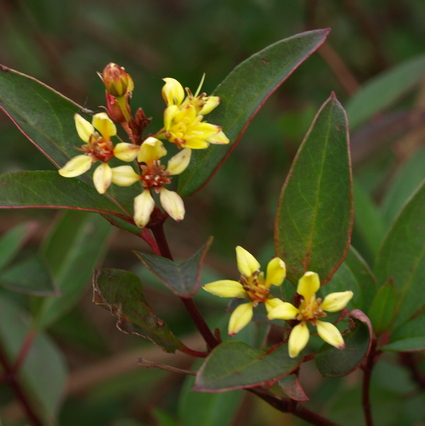
The fading flowers of our thryallis 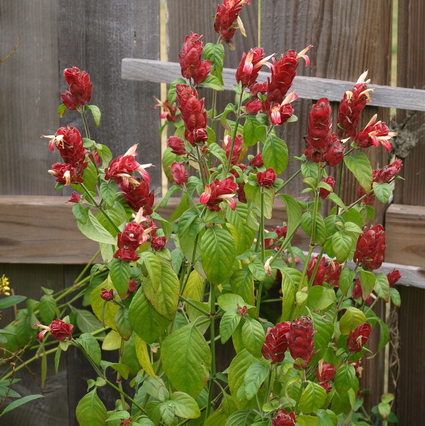
Shrimp plant in full regalia
Among the taller border dwellers, the duranta keeps producing its wonderful purple-and-white flower chains (it was killed to the ground by last winter's hard freeze, but returned from the roots strongly; we hope that this winter will be kinder), while the Turk's cap (Malvaviscus 'Big Momma') has taken on a sparser guise but still produces its popping-red never-quite-open flowers. 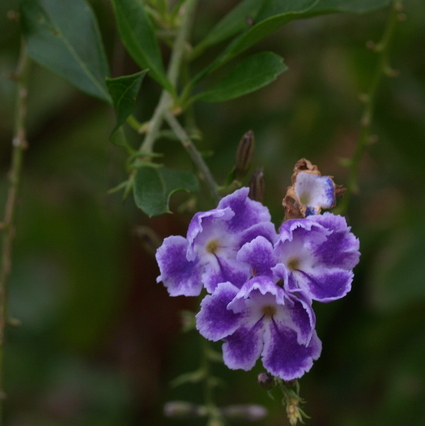
Duranta, charming as ever 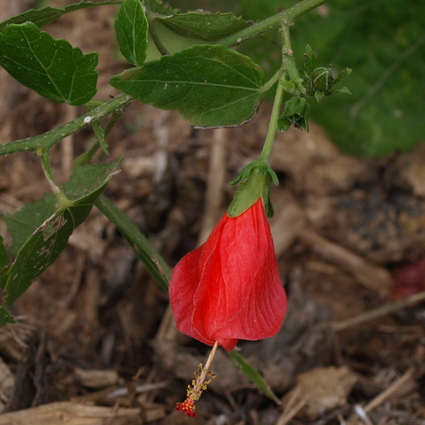
Turk's cap in glowing scarlet
From the ranks of the climbers and sprawlers, several specimens keep the show going. The star jasmine still throws out occasional pure white flowers, and the passionflower continues to pop open its amazing flowers every so often, but the stars here are the bleeding heart vine (Clerodendrum speciosum 'Red Wine'), which is somewhat hidden in a shady corner of the border, and Cape honeysuckle (Tecomaria capensis), which lifts its bold orange-red flowers as high as it can, supported by the back fence. 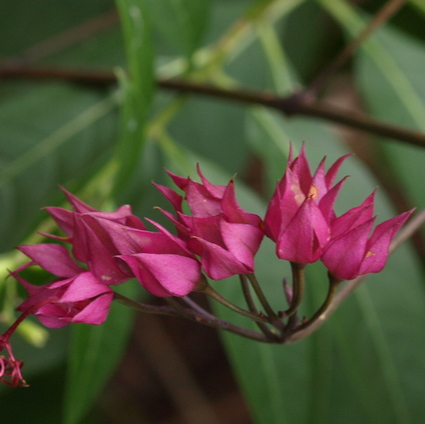
Clerodendrum 'Red Wine', demurely pretty... 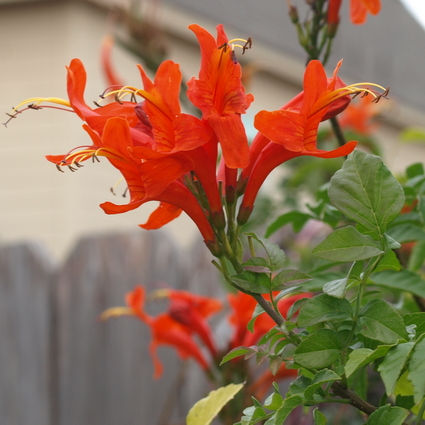
...unlike Tecomaria capensis, which proudly displays its bold blooms
And then there's all the others – from low-growing Oxalis regnellii sporting blooms on both its green and purple forms, to various roses, two species of Cuphea, Okinawan spinach, and cilantro, which has only recently started blooming. Oh, and the poinsettia we saved from last year's holiday season. Just a sampling below... 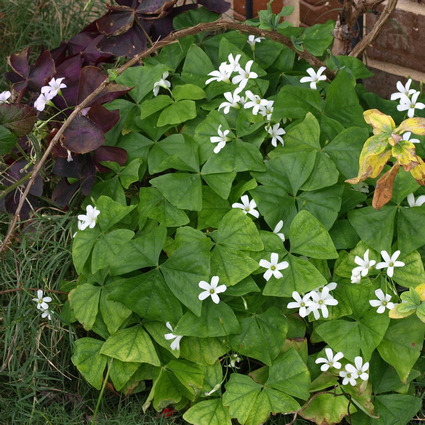
Oxalis never stopped blooming 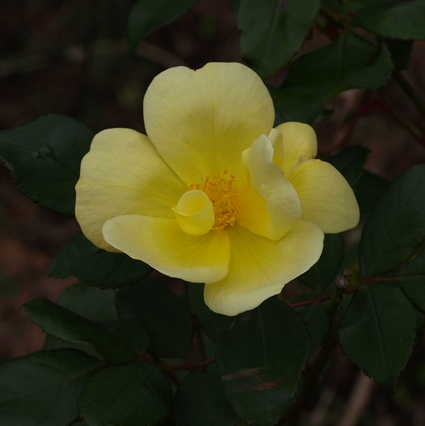
Rosa 'Sunny Knockout' looks better now than it did all season
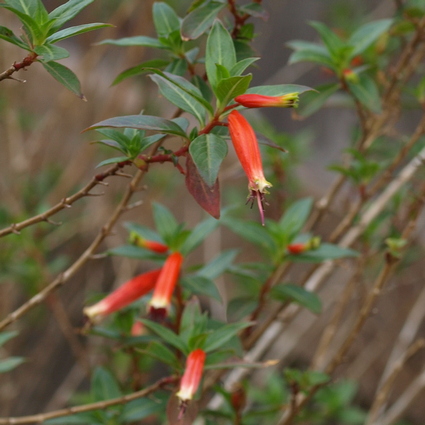
Cuphea 'Vermillionaire' keeps treating us to its cigar flowers 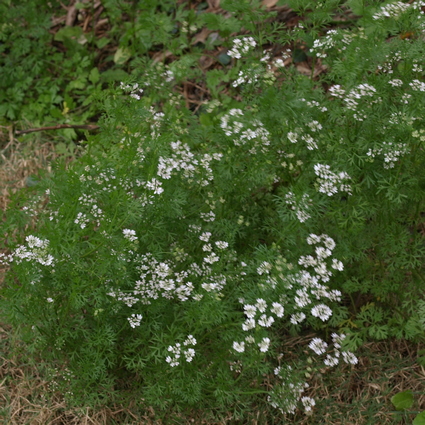
Cilantro/coriander lends a fresh fragrance besides its modest flowers
All of this color, plus the fact that many non-flowering plants are still sporting attractive foliage, makes daily traverses of the garden, pulling a weed here, snipping some deceased annuals there, a pleasant endeavor. Thoughts of gardening efforts in 2019 are already brewing...
Visitors to this page have left the following comments
I welcome comments about my web pages; feel free to use the form below to leave feedback about this particular page. For the benefit of other visitors to these pages, I will list any relevant comments you leave, and if appropriate, I will update my page to correct mis-information. Note that I discard any comments including html markups, so please submit your comment as plain text. If you have a comment about the website as a whole, please leave it in my guestbook. If you have a question that needs a personal response, please e-mail me. | |||||||||||||||||||||||||||||
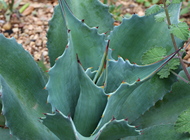
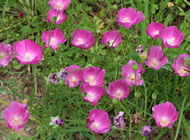
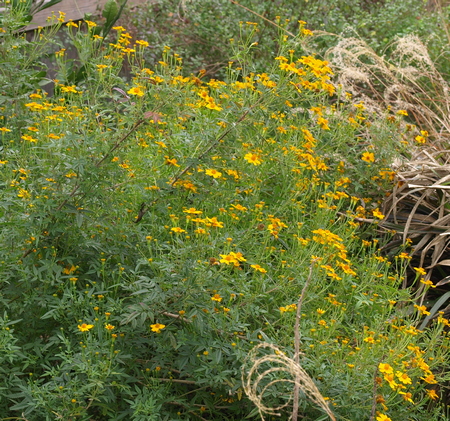 Without a doubt the most exuberantly flowering plant in the garden now is our
Without a doubt the most exuberantly flowering plant in the garden now is our